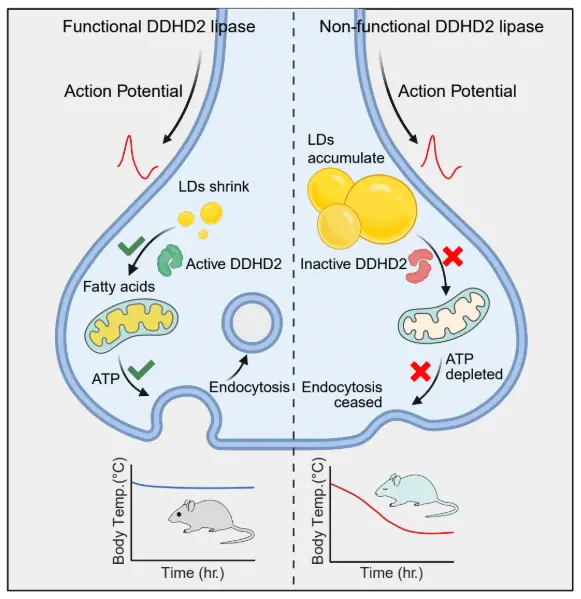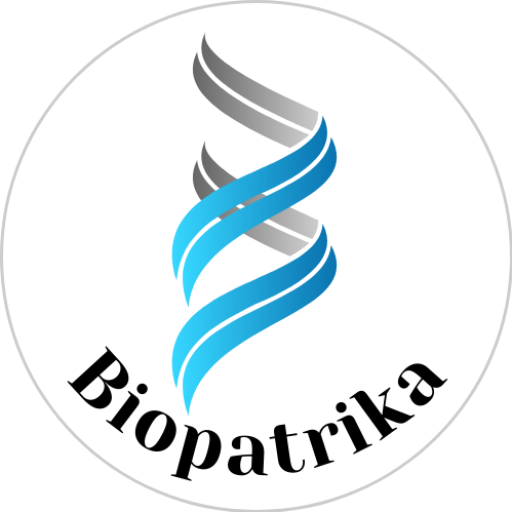Research Summary: We overturned a glucose-centric view of brain energy metabolism by showing that tiny lipid droplets may supply fatty acids to mitochondria for ATP synthesis to support synaptic activity during hypoglycemic state.
Author interview

Mukesh Kumar is a post-doctoral associate in the lab of Prof. Timothy A. Ryan at Weill Medical College of Cornell University, New York, USA. He received his Ph.D. from Tata Institute of Fundamental Research Mumbai, under guidance of Prof. Roop Mallik (now at Indian Institute of Technology, Bombay).
Linkedin | Twitter | Instagram
Lab: Prof. Timothy A. Ryan, Weill Medical College, Cornell University, New York (USA)
What was the core problem you aimed to solve with this research?
Though recent scientific advancements indicate otherwise, neuroscience textbooks continue to assert that neurons rely exclusively on glucose to meet their energy demand. Notably, both patients and animal models of neurodegenerative diseases—namely DDHD2-linked hereditary spastic paraplegia (HSP54), Alzheimer’s, and Parkinson’s—show striking accumulation of triglycerides in the brain along with marked synaptic ATP deficits. These observations prompted us to ask two fundamental, but provocative questions: Where exactly in the neurons does the fat accumulate? Whether the triglyceride metabolism contributes to neuronal—especially synaptic—energy demand? Answering these questions would clarify whether dysregulated triglyceride metabolism directly contributes to the synaptic vulnerability in neurodegenerative diseases during energy-stress conditions.

How did you go about solving this problem?
To address these questions, we combined established methods with several new tools in neurobiology. We pharmacologically inhibited DDHD2 lipase, and labelled lipid droplets to probe their subcellular localization in neurons. Live imaging of fluorescently tagged fatty acids allowed us to monitor their transfer from lipid droplets to mitochondria in real-time. To investigate the local energy status and synaptic endurance, we employed genetically encoded ATP and recycling sensors recently developed in our lab. Finally, we tested physiological relevance of the triglyceride metabolism in mice by inhibiting fatty acid mobilization in the brain and monitoring thermoregulatory behavior under limited glucose availability.
How would you explain your research outcomes (key findings) to the non-scientific community?
Imagine each synapse storing a tiny ‘oil can’ as an emergency reserve. When sugar runs low, these cans are cracked open, and their contents, delivered to nearby mitochondria to keep synapses functioning. If the opener tool (in this case, DDHD2 lipase) is broken or the fuel line (in this case, CPTs) to mitochondria is blocked, the oil cans pile up unused, energy drops, and the system slows down, exactly what happens in the torpor state of mice or HSP54 patient’s brain. In conclusion, neurons do not rely solely on sugar, they also make use of reserved fats at communication points to support local functions during energy crisis.
“By learning more about the molecular details, we hope to ultimately unlock explanations for neurodegeneration, which would give us opportunities for finding ways to protect the brain.”
What are the potential implications of your findings for the field and society?
Our research rewrites the metabolic map of neurons by including a triglyceride-to-ATP axis at synapses. It explains why the lipid metabolism pathway is crucial for neuronal functions and its impairment leads to synaptic failure in neurodegenerative disorders. Though it is still far from reality, lipid-based therapy for patients with neurodegenerative disorders is a promising option that requires further research.
What was the exciting moment during your research?
What intrigued me the most during this research was seeing most of the lipid droplets localized exactly at synaptic terminals, the site of intense metabolic demand and where DDHD2 lipase is particularly enriched. It was also exciting to observe that the transfer of fatty acids to mitochondria depends on synaptic activity.
Paper reference: Kumar M, Wu Y, Knapp J, Pontius C L, Park D, Witte R E, McAllister R, Gupta K, Rajagopalan K N, De Camilli P and Ryan T A. Triglycerides are an important fuel reserve for synapse function in the brain. Nature Metabolism, July 2025. https://doi.org/10.1038/s42255-025-01321-x
Explore more
🎤 Career – Real career stories and job profiles of life science professionals. Discover current opportunities for students and researchers.
💼 Jobs – The latest job openings and internship alerts across academia and industry.
📢 Advertise with BioPatrika – Reach the Right Audience, Fast!




